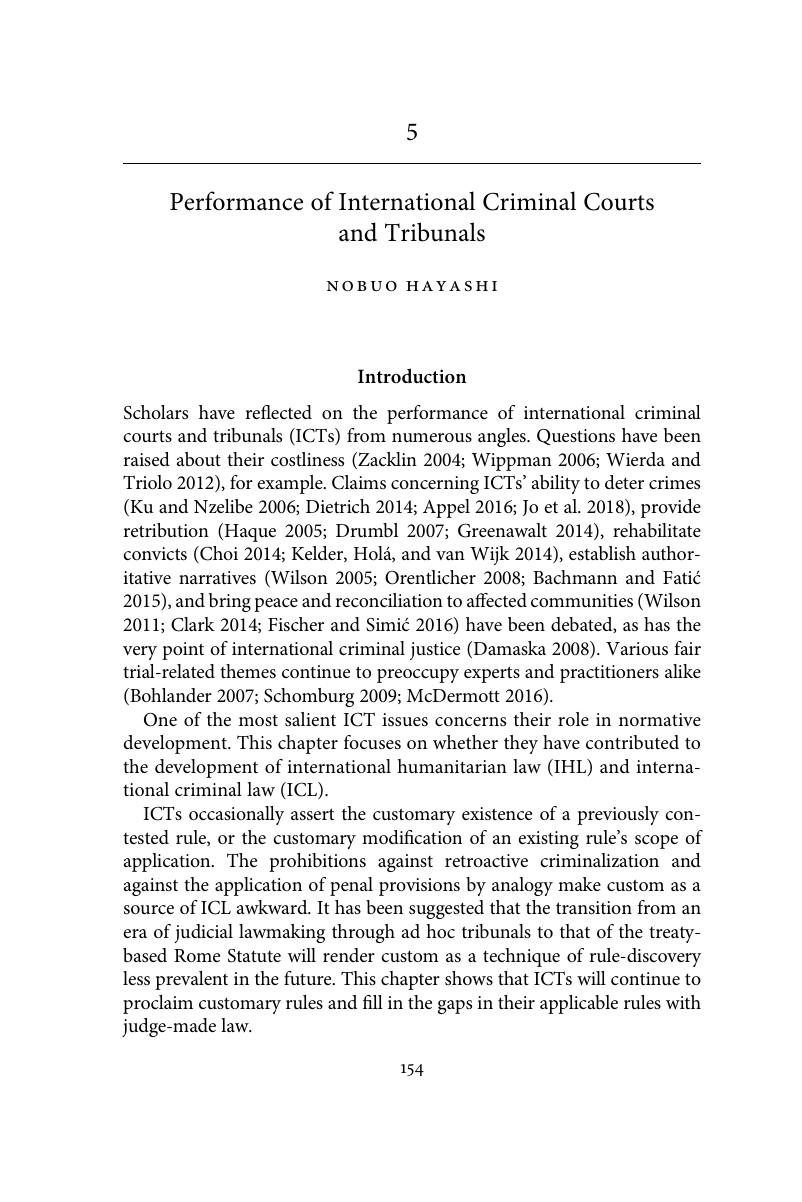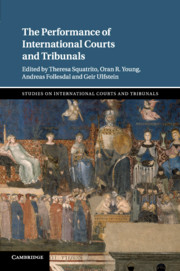Book contents
- The Performance of International Courts and Tribunals
- Studies on International Courts and Tribunals
- The Performance of International Courts and Tribunals
- Copyright page
- Contents
- Figures
- Tables
- Maps
- Contributors
- Acknowledgments
- Abbreviations
- Introduction
- Part I
- 2 Court Performance within the Multilateral Trade Regime
- 3 Performance of Investment Treaty Arbitration
- 4 Performance of Regional Human Rights Courts
- 5 Performance of International Criminal Courts and Tribunals
- Part II
- Part III
- Index
- References
5 - Performance of International Criminal Courts and Tribunals
from Part I
Published online by Cambridge University Press: 29 March 2018
- The Performance of International Courts and Tribunals
- Studies on International Courts and Tribunals
- The Performance of International Courts and Tribunals
- Copyright page
- Contents
- Figures
- Tables
- Maps
- Contributors
- Acknowledgments
- Abbreviations
- Introduction
- Part I
- 2 Court Performance within the Multilateral Trade Regime
- 3 Performance of Investment Treaty Arbitration
- 4 Performance of Regional Human Rights Courts
- 5 Performance of International Criminal Courts and Tribunals
- Part II
- Part III
- Index
- References
Summary

- Type
- Chapter
- Information
- The Performance of International Courts and Tribunals , pp. 154 - 190Publisher: Cambridge University PressPrint publication year: 2018



